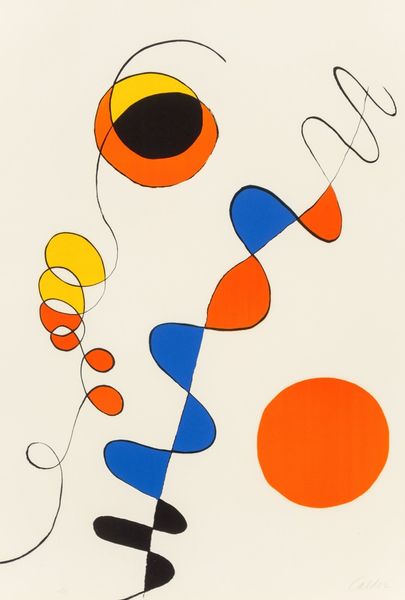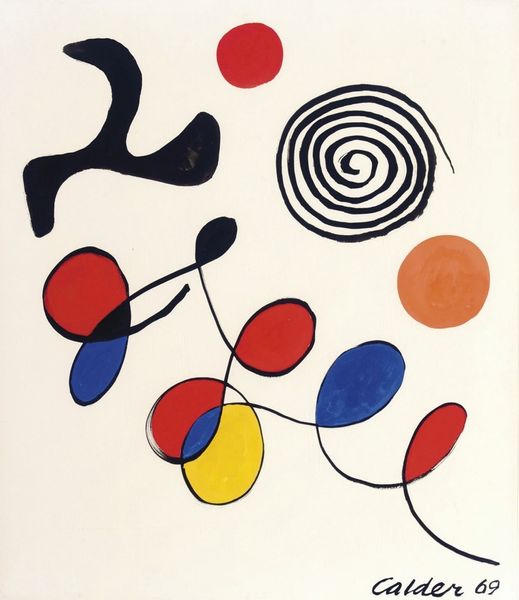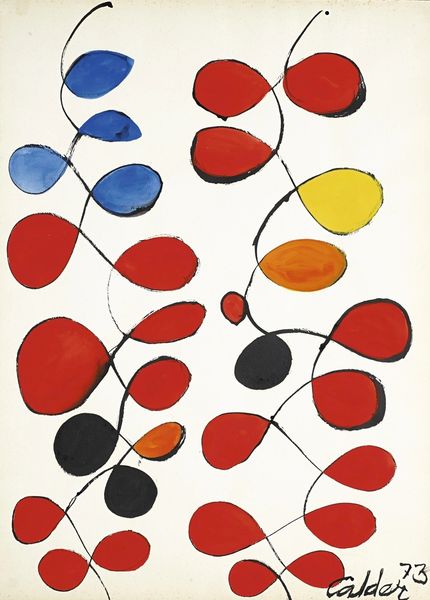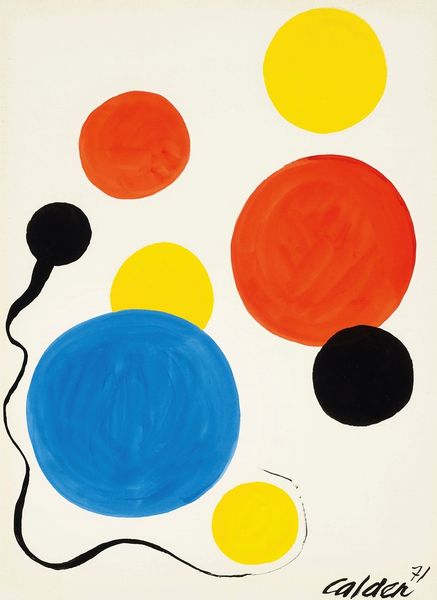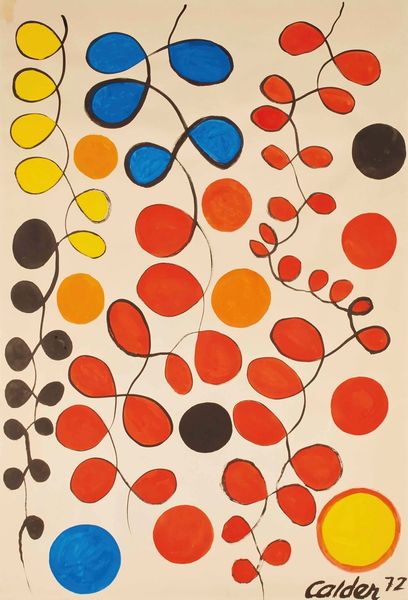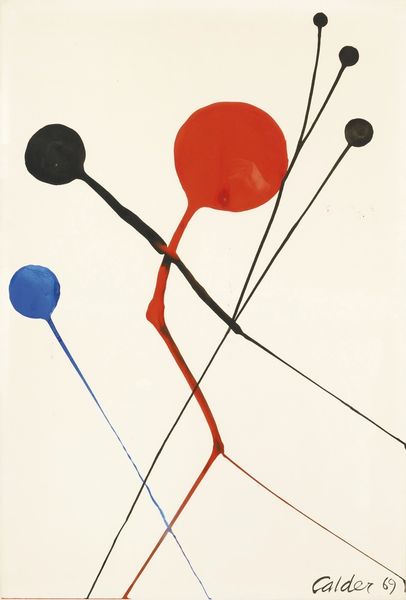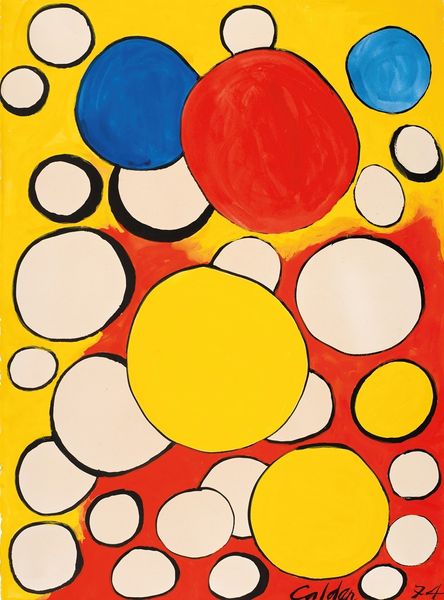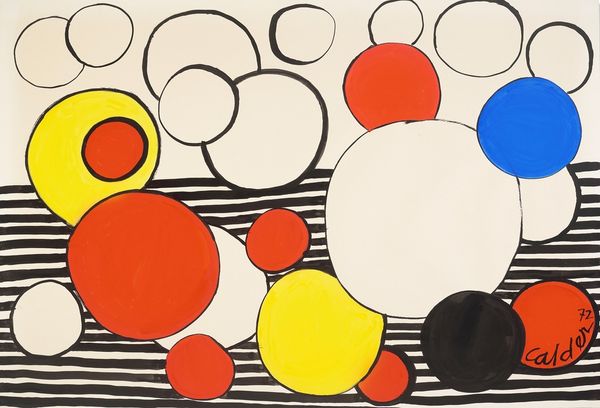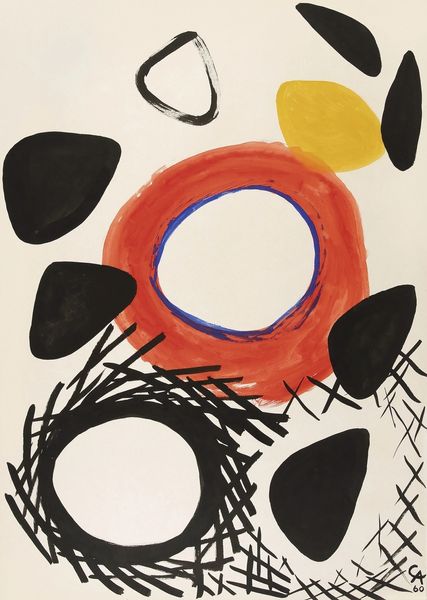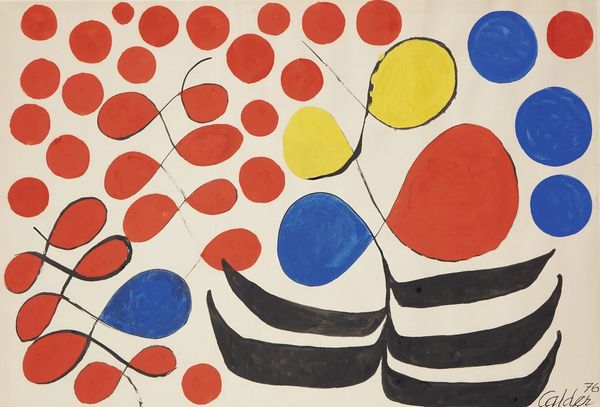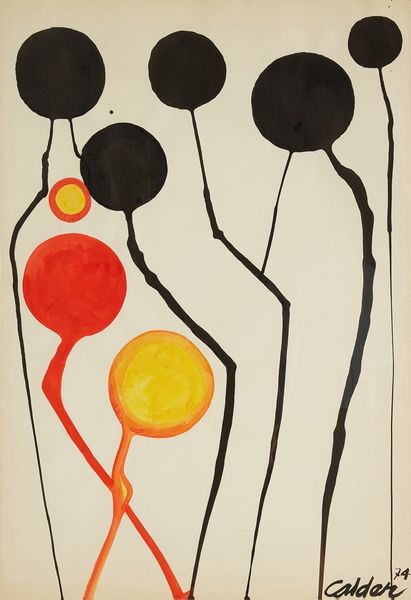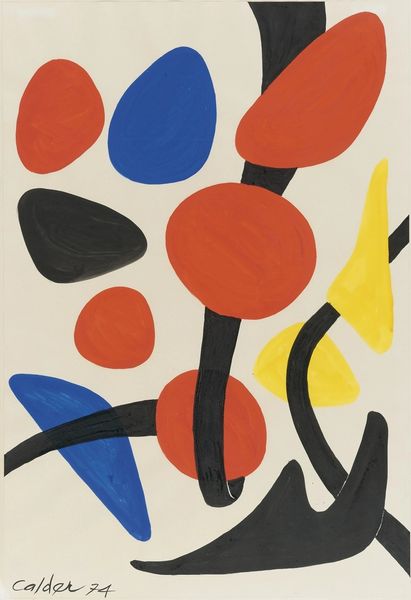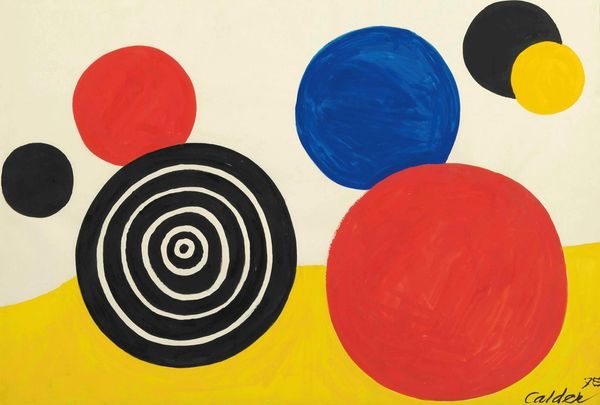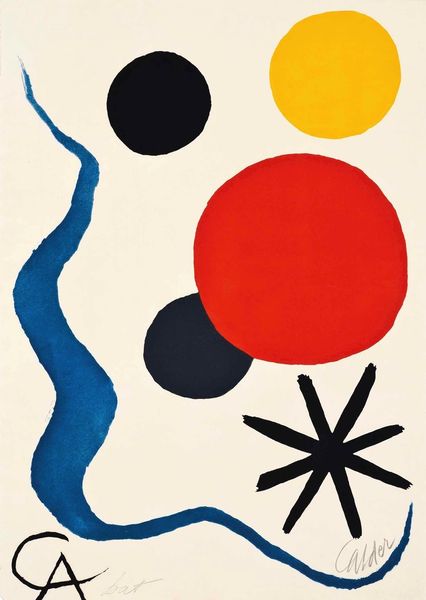
painting, acrylic-paint
#
painting
#
pop art
#
acrylic-paint
#
abstract
#
form
#
geometric
#
pop-art
#
line
#
modernism
Copyright: Modern Artists: Artvee
Editor: Right, next up is Alexander Calder’s "Vertical Loops," painted in 1968 using acrylic paint. It’s striking how he’s balanced these playful, almost whimsical, forms with a very controlled palette. What historical currents were influencing his artistic choices at this point? Curator: Calder’s "Vertical Loops" arrives amidst the late stages of Modernism, when the role of the artwork itself was in constant renegotiation with the socio-political backdrop of the 1960s. Although seemingly innocuous in its playfulness, the use of simplified forms and primary colors speaks to the broader impulse in art to democratize the image. Were these forms a kind of visual language accessible to everyone, regardless of class or education? Editor: So, was this move toward abstraction a response to societal shifts or a conscious effort to break away from traditional art hierarchies? Curator: Exactly. You see the legacy of the Bauhaus, even. There was an aim to make art less elitist, to make it 'for the people.' The flatness and bold color blocking suggests Pop Art influences as well, another movement invested in challenging notions of “high” art by embracing popular culture and mass production. Consider also, who has access to art? Who gets to decide what's valuable and important? Calder, whether intentionally or not, is participating in that discussion. Editor: It's interesting to think of such a joyful piece as also being part of a broader dialogue about art's role in society. I hadn’t considered it from that angle initially. Curator: Precisely, and that's what makes art history so fascinating. It reveals that even the simplest forms can hold complex cultural meanings. How do museums shape those meanings today?
Comments
No comments
Be the first to comment and join the conversation on the ultimate creative platform.
